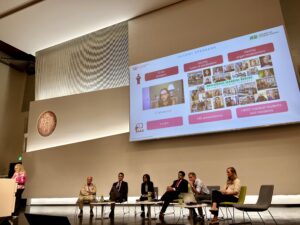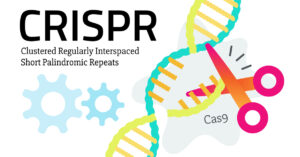
What does the Inflation Reduction Act of 2022 mean for the rare disease community and Amyloidosis patients?
Those of us in the amyloidosis patient community hear repeatedly that the key to better outcomes is early diagnosis and treatment. Much progress continues to be made in raising awareness in the medical community about these rare diseases. The goal is to help physicians consider and test for the diseases but there remains more to be done. For many reasons, inconsistent and widely varied multi system symptoms, misdiagnosis based on symptoms that mimic more typical conditions, lack of familiarity with the disease and more, amyloidosis remains widely underdiagnosed. Speaker Bureaus with patients telling their stories to medical students and residents, patient support groups that invite physicians to explain their experience in diagnosing amyloidosis, and a variety of medical education opportunities continue to help raise awareness. Once a patient does receive a correct diagnosis and is referred for treatment another journey begins. The currently available and most effective therapies are almost uniformly far too costly for patients to bear. Copay assistance programs from pharmaceutical companies provide much needed help but many Medicare patients are forced to “compete” for grant monies and in some cases still have exorbitant out of pocket copays. Additionally, it is often a lengthy and difficult process to obtain insurance approval for coverage of these costly medications with prescribers and patients spending much time, years in some cases, working through the denials and appeals and still not always receiving approval.
Unlike twenty years ago there are now several good FDA-approved treatment options for amyloidosis in the U.S. These slow the progression of the debilitating symptoms of the diseases, but none cure or reverse the damage already done. Considerable research and development continues in a search for more effective treatments with the goal of finding a cure, but the search is costly and time consuming.
Until the early 1980s pharmaceutical companies had no financial incentive to spend the enormous amounts of money required to develop a new drug to treat the small populations of patients with a rare disease, defined as “affecting fewer than 200,000 US citizens.”1 The market for the resulting drugs would not be large enough to make it financially feasible. The Orphan Drug Act (ODA) of 19832 was created to help with exactly this sort of situation. Prior to its adoption, “only ten products for the treatment of rare disease were approved for use in the U.S.”1 This is a stunning fact when one considers that according to the Genetic and Rare diseases Information Center of the National Institutes of Health, known rare diseases now number more than six to ten thousand and afflict more than thirty million people.3
“In the early 1980s, families, advocates, and leaders of several rare disease patient organizations formed an ad hoc coalition to focus attention on this problem. That coalition was instrumental in passage of the Orphan Drug Act, a landmark bill that created financial incentives for the development of treatments for rare diseases…In 1983, that coalition became the National Organization for Rare Disorders, or NORD…” 4
Pressure from this coalition, the medical community, and the public resulted in the passage of the Orphan Drug Act of 1983 (ODA).
“…Since the passage of the Orphan Drug Act of 1983, the US Food and Drug Administration (FDA) has approved more than 500 orphan products and rare disease therapies, and orphan drugs currently make up more than 50% of new drug approvals at FDA.” 4
The Act was also intended to address what was perceived by many in the medical community as a lag of available and appropriately effective therapies in the US compared with the rest of the world. This was usually attributed to the tightening of drug safety laws required by the Kefauver-Harris Bill of 1962 which amended the Food, Drug, and Cosmetic Act enacted after the horrible events with thalidomide in years just prior. This amendment required “…all drugs to be proven safe and effective by adequate well-controlled studies before being approved for the U.S. market. While this improved public protection from potentially dangerous pharmaceuticals, it also dramatically increased the costs associated with drug development. Consequently, pharmaceutical companies began to focus on developing treatments for common diseases with large potential markets in order to maximize the possibility of recouping research and development costs and generating significant revenues.1
The ODA with its provisions for seven-year market exclusivity for orphan drugs, generous tax credits, drug development grants, expanded access to approved orphan drugs, and FDA fee reductions was intended to correct the unintended consequences of the Kefauver-Harris Bill and did result in a dramatic increase in new medications for rare diseases. The ODA was widely hailed as a great success5 but an unintended consequence of the incentives was its contribution to the escalating price of prescriptions.
By the late 1980s the concern for the rare diseases had shifted from the need for incentives to develop them to the unprecedented profits pharmaceutical companies were making from these orphan drugs and the ever escalating prices and the inability of patients to afford them. An excellent history of the changing landscape and legislation around treatments for rare diseases can be found in the National Institutes of Health National Library of Medicine’s Orphans in the Market: the History of Orphan Drug Policy.6
In response to public outcry, the Inflation Reduction Act of 2022 (IRA) which, among its many other provisions, included new laws to address prescription costs especially for elder Americans with Medicare coverage. The law, Public Law No: 117-169, was a response to the Comprehensive Plan for Addressing High Drug Prices: A Report to the Executive Order on Competition in the American Economy dated September 9, 2021.7 The text of the act can be read in Section B – Prescription Drug Pricing Reform which discusses how price lowering is intended to occur. One provision of the law allows Health and Human Services to negotiate with pharmaceutical companies the “maximum fair price” for a limited list of the most commonly used drugs for patients with Medicare coverage. For a detailed review of the provisions of this law as it relates to Medicare drug coverage please see Explaining the Prescription Drug Provisions in the Inflation Reduction Act, January 24, 2023 8 or Fact Sheet: Medicare Prescription Drug Inflation Rebate Program Part B Rebatable Drug Coinsurance Reduction, March 2023.9 Transition to the new policies are beginning now and will continue to roll out over the next few years. Initial reaction to the law has been positive but with more understanding about how the law works some of this enthusiasm has shifted to concern about the unintended consequences especially for the rare disease community.
A law to help reduce the cost of drugs should be a cause for celebration and much of the IRA appears to offer just that, but in recent months several opinion pieces and responses to the legislation have suggested unintended negative consequences. A balanced consideration from the National Organization of Rare Disorders (NORD) looks at the pros and cons of the IRA10 and a letter to then Majority Leader Schumer August 5, 2022 from the Everyday Foundation for Rare Diseases, another respected non-profit advocacy group for the rare disease community, strongly advocates for a reconsideration of the language in the act limiting the exclusions of rare disease drugs to “…those for only one disease and one approved indication…” 11 In March of this year an article from the Council for Affordable Health Coverage entitled How the Inflation Reduction Act is Impacting Rare Disease Patients12 published a blog that explored the impact of the IRA with a focus on these consequences. Of particular interest is the focus on research and development. The law has already been cited by Alnylam and Eli Lilly as the reasons for stopping research on certain secondary uses for specific drugs. As recently as March and July of 2023, two lawsuits have been initiated to challenge provisions of the IRA, one by Merck and the other by the U.S. Chamber of Commerce. Each argues that the price negotiating processes outlined in the law will work to “jeopardize medical breakthroughs for individuals with life-threatening and chronic illnesses.”13
Another interesting exploration of the potential downsides of the current law, Inflation Reduction Act’s Unintended consequences, can be found in recent postings from PhRMA.Org, a trade group which lobbies on behalf of the U.S. pharmaceutical industry14. While the perspective is from that of the industry, the arguments made are reflected in both recent lawsuits and in the stopping of research and development for secondary applications of drugs previously approved for single disease treatment. Consider information about Alnylam’s decision to curtail a planned phase 3 study of the drug Amvuttra, currently FDA approved for the treatment of hATTR-PN hereditary amyloidosis polyneuropathy, that was also showing potential for use in the treatment of Stargardt, a rare eye disease.15
Alnylam attributed the pause to Biden’s Inflation Reduction Act, which allows Medicare to directly negotiate prices of some high-expenditure drugs. Drugs with one single orphan drug designation is exempt from potential price negotiations, a term that may discourage companies from exploring approvals in additional indications, Alnylam CEO Yvonne Greenstreet noted on the call. Because Amvuttra and Onpattro already has an orphan status in ATTR, an additional orphan label could theoretically open it for potential pricing scrutiny. 16,17
SUMMARY
As awareness about amyloidosis continues to increase and more and more patients are properly diagnosed and hoping to begin therapy to help mitigate the disabling and too often fatal progress of the diseases, it is important to consider both the financial burden to the patient and the availability of new and better drugs to treat or even cure the disease. Despite the well-intended goal of lowering prescription drug costs generally and allowing drug prices for Medicare recipients to be negotiated, there remains much to unravel about the effects of the new Inflation Reduction Act. It will likely save many people money but there is concern, especially regarding the medications for the treatment of rare diseases such as amyloidosis, and about what appears to be a disincentive to pharmaceutical companies to engage in costly research and development to treat these rare diseases. The challenge to diagnosis and providing effective, affordable treatment to amyloidosis patients continues.
CITATIONS
1https://www.researchgate.net/publication/7239721_Orphan_drug_policies_implications_for_the_U nited_States_Canada_and_developing_countries, Cheung, Cohen & Illingworth download
2https://www.govinfo.gov/content/pkg/STATUTE-96/pdf/STATUTE-96-Pg2049.pdf
3https://rarediseases.info.nih.gov/
4https://rarediseases.org/about-us/history/
5https://oig.hhs.gov/oei/reports/oei-09-00-00380.pdf
6https://pubmed.ncbi.nlm.nih.gov/31384102/
7https://www.congress.gov/117/plaws/publ169/PLAW-117publ169.pdf
9https://www.cms.gov/files/document/fact-sheet-part-b-rebatable-drug-coinsurance-reduction.pdf
13https://www.advisory.com/daily-briefing/2023/06/14/ira-lawsuits
14https://phrma.org/inflation-reduction-act
Note: Fierce Pharma is a news publication of happenings in the Pharmaceutical industry
17https://rapport.bio/all-stories/alnylam-is-doing-what-the-ira-is-telling-it-to-do
ADDITIONAL READING
ORPHAN DRUGS AND RARE DISEASES
https://www.accessdata.fda.gov/scripts/cdrh/cfdocs/cfcfr/CFRSearch.cfm?fr=316.20https://www.fda.gov/patients/rare-diseases-fda
INFLATION REDUCTION ACT
https://www.cms.gov/files/document/fact-sheet-part-b-rebatable-drug-coinsurance-reduction.pdf



